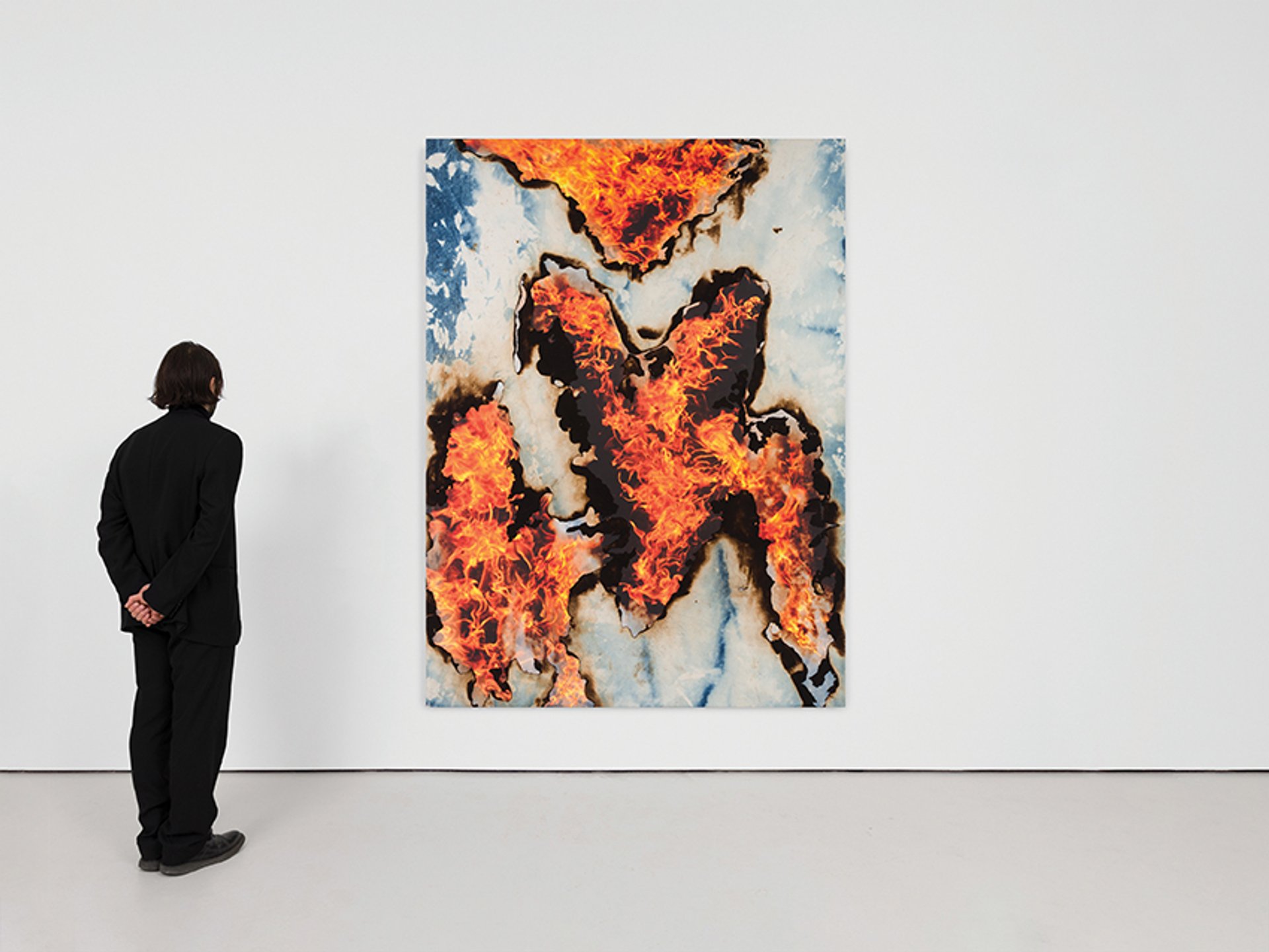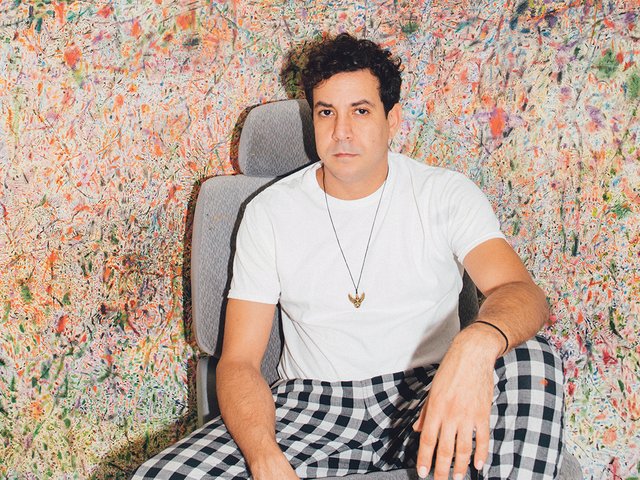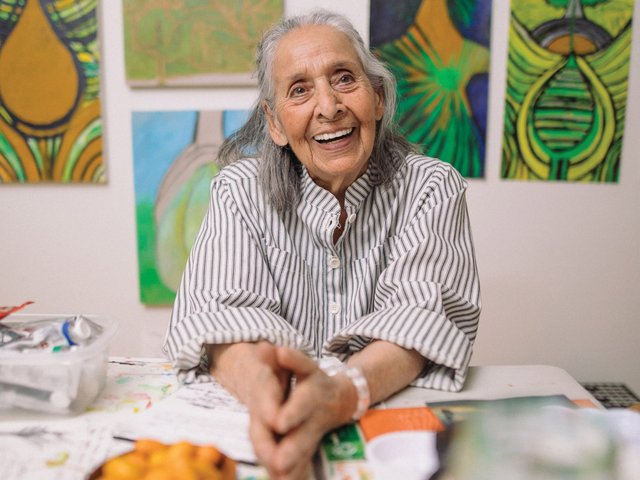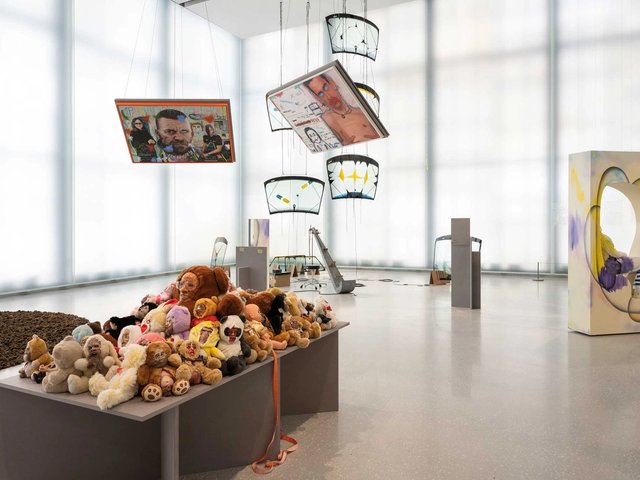It is hard to categorise the work of the artist Korakrit Arunanondchai, who says his most important materials are time and history. Often described as following the concept of the gesamtkunstwerk (total work of art), Arunanondchai uses everything from video, sculpture, performance, music and painting—often using denim for canvas—to create super-sensory shamanic-like experiences that question the limits of this world and the possibility of an afterlife.
Born in Thailand, Arunanondchai splits his time between Bangkok and New York, though he was caught in Thailand during the pandemic, where he spent the year developing his painting and working on two new videos, which are now on show at the Migros Museum in Zurich—the artist’s first solo institutional exhibition in Switzerland. You can also find Arunanondchai’s work on Carlos/Ishikawa’s stand at Art Basel.
The Art Newspaper: For your exhibition at the Migros Museum, your two films, Songs for dying and Songs for living (both 2021), will be presented together for the first time. Songs for dying incorporates global events, for example the Jeju Massacre of 1948 in Korea and the pro-democracy protests in Thailand in 2020, with spiritual and shamanistic elements. But it’s chiefly about your grandfather dying…
Korakrit Arunanondchai: Songs for dying was originally commissioned for a show at the Kunsthall Trondheim and the Gwangju Biennale, which opened during the pandemic, so I never got to see it. It started out as this research project on animistic and shamanic traditions in different countries and places that were colonised, where you can kind of trace the effects and the built-up trauma. So I went to the Philippines and did a lot of research in Thailand and Korea, and then Covid happened and I was kind of stuck in Thailand and unable to get to Korea to finish the project. And then my grandfather passed away. The funeral was nine days long. After the funeral, I went to a Buddhist workshop to process it. So the video and the installation were born from this story, a sort of meditative void which was very close to the space of death.

A still from Arunanondchai’s video Songs for Dying © Korakrit Arunanondchai
Where do the videos take place, so to speak?
Most of Songs for dying was shot on the beach where my grandfather raised me in Thailand. When he was cremated, his bones turned to coral, and I went out on a boat and returned them to the sea. Freud coined the phrase “oceanic feeling”, which refers to the religious sensation you have when you’re at one with everything—it’s supposed to recall feelings of being in the womb, when you’re still part of everything else. So I was thinking of the ocean as a womb-like space as well as this dividing line between the sea and the sky, the mind and the body. Songs for dying is about the splitting of those spaces and Songs for living is about how they then come back together.
You were in a band before you became an artist and electronic music has played a big role in your work. What are the “songs” referred to in the titles of your new videos?
When my grandfather died, I was encouraged to sing; there were monks singing too. There’s this idea that the songs or the prayers that sound like song nurture the spirit or the essence of the person continually onwards, even after their heart has stopped. It was hard to tell exactly the moment he died, or what was actually gone. If there was a spirit, when did the spirit leave the body? I was just thinking about shamans using songs as mediums, or even the idea of songs as a method for gathering and transcending to a higher power or this transcendent space. And that’s why these two videos are very music-centric. With Songs for dying, it’s a lot more ballads and soft music. With Songs for living, there’s live drumming and guitar—music that brings you into the body.

The artist’s Fire is catching and If we burn you burn with us (2021) © Korakrit Arunanondchai
What other elements are combined in your Migros Museum show?
There’s an enormous painting titled If we burn, you burn with us (2021). It’s more like a mural incorporating all these bodies made from prints of my body. It’s essentially a painting of a ritualistic bonfire with a giant burning bird that looks like a phoenix. It’s unclear if the bird is burning or if the bird is rising out of the fire. It’s kind of like the creation and de-creation of this thing, all at once. The bird is also a reference to the mockingjay and The Hunger Games movie where the three-fingered salute as a symbol of defiance was born, later taken up by protesters in Thailand and Burma as a symbol of pro-democracy protest.
At Art Basel, your gallery is showing one of your new works—a continuation of your History Painting series—which incorporates patches of burnt tie-dyed denim with photographic renderings of the very flames that burnt the fabric. You use denim as a material a great deal in your work—what is its significance?
This series, which I started in 2012, has really grown with my practice. It began with this denim painter character, which was basically just me. I wanted to make a story or narrative around the word denim. For me, contemporary art has always been this globalising force. As soon as someone painted on a canvas, that’s when they entered the Western canon of painting. Painting with a capital “P”. I felt like I wanted to paint on denim because denim constantly signifies Western globalisation and the soft power of America. Today, one in seven people in the world have denim. It felt like that was the thread or the canvas I wanted to build my practice upon. But now I think the series has gone full circle, it goes back to my grandfather, to the idea of death, to the source of the fire itself.
• Korakrit Arunanondchai: Songs for dying/Songs for living, Migros Museum, Zurich, until 9 January 2022





